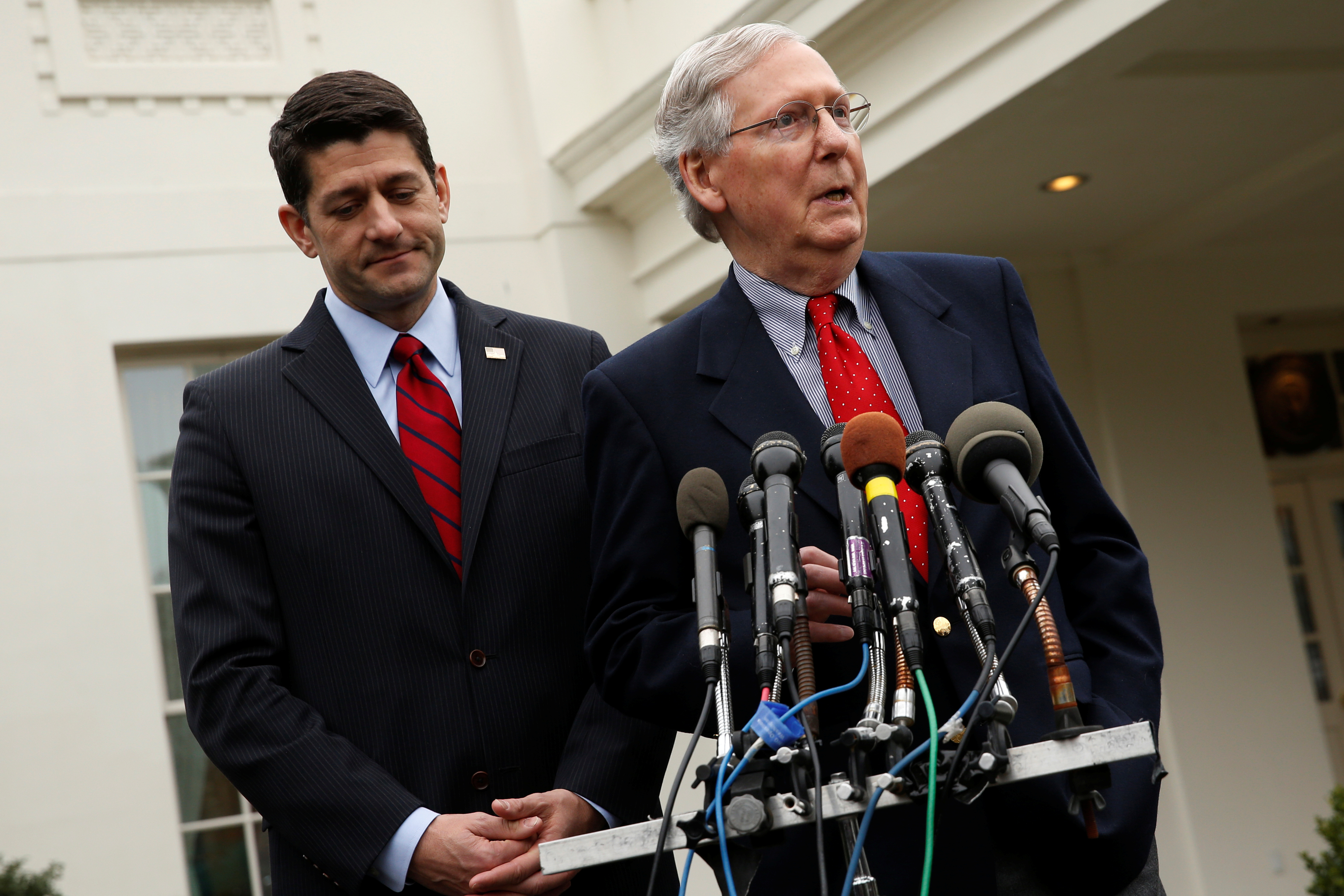A short-term spending bill is set to expire on Friday, and Congress is currently trying to keep the government funded in order to avoid a shutdown.
A government shutdown is nothing new – there have been 17 shutdowns since the new congressional budgeting process was implemented in 1976 – but this one would be the first time since Jimmy Carter’s presidency during which there’s a government shutdown when one party controls both Congress and the White House.
As Congress races to meet its deadline, talks of a budget deal slowed amidst the president’s insistence that a new budget bill include funds to build a wall across the southern border between the US and Mexico.
Trump backed down from that stance during a meeting with conservative media on Monday, when he said, according to press-members in the audience, that he would be open to adjusting the timeline for building the wall and shifting it to September. A new spending bill will likely be needed at that time.
As a potential shutdown looms closer, it's worth examining what it means and whether this shutdown has different implications than previous ones.
What happens when the government shuts down?
The result is essentially a partial government shutdown. Most nonessential services would come to a halt, while critical bodies like the Department of Homeland Security and the FBI would continue to function. The TSA, the US Post Office, federal prison staff, emergency workers, and doctors would also continue to work.
Members of the US armed services would serve but would not be compensated, because the Department of Defense lacks the legal authority to pay any military or civilian personnel during a government shutdown.
The Centers for Disease Control and Prevention and the National Institutes of Health would shut down. That means the NIH's disease hotlines and the CDC's disease surveillance and prevention would grind to a halt. The NIH would also be unable to enroll patients in experimental studies.

A few things that continue, even in the event of a government shutdown: social security checks and food stamps continue to be sent out, and public transportation would likely stay up and running, as would the courts - though a longer government shutdown could also stall the judiciary.
During the last government shutdown in October 2013, out of around 2 million federal employees, 800,000 were deemed inessential and were not permitted to work or receive pay during the shutdown. Eventually, Congress decided to pay those employees retroactively.
Departments like the National Park System and NASA were entirely shut down. As a result, national parks lost about $76 million per day in revenue, according to ABC News.
Millions of veterans and their families nearly did not receive their due benefits. Veterans Affairs secretary at the time, Eric Shinseki, said that if the shutdown continued through October, around 5.1 million veterans would not be compensated by the VA.
The US lost $24 billion during the 2013 shutdown, according to Standard & Poor's estimates. That's about $1.5 billion per day.

What's different this time?
The main variable this time around is President Trump and the level of disagreement within the Republican party.
During the 2013 government shutdown, "there were two very competing sets of priorities between the Republican and Democratic parties," David Bateman, an expert on Congress and assistant professor of government at Cornell University, told Business Insider in an interview.
Today, the difference is "between Trump and congressional Republicans," said Bateman.
Republicans and Democrats in Congress had signaled as far back as October that they were ready to move forward to pass an appropriations bill for fiscal year 2017, according to Bateman. But Trump's demand that the spending bill include funding for a border wall likely threw a wrench into any bipartisan consensus, with a majority of Democrats and even a number of Republicans coming out against the president's proposal.
If the president agrees to push back his demand for the wall to September, barring any other complications, the bill will probably pass, Bateman said, and a government shutdown can be avoided. But the issue will continue to be a "non-starter" in the future, he added.
Democrats have come out strongly against Trump's plan for a border since he first pitched it during the campaign. If he pushes the issue back to September, when debate commences over a spending bill for 2018, the same problem is likely to arise again.
"I find it very difficult to believe that Democrats would vote for anything that could be deemed as money for a wall," Bateman said. They might, however, vote for more money allocated towards border security or border control.
What may be likely, Bateman said, is "some type of bill that increases money for border security, and Trump makes a big deal about that, but it won't be a wall. Anything that suggests or targets money towards a wall, Democrats will vote against ... until at least 2018, and probably well past that."

